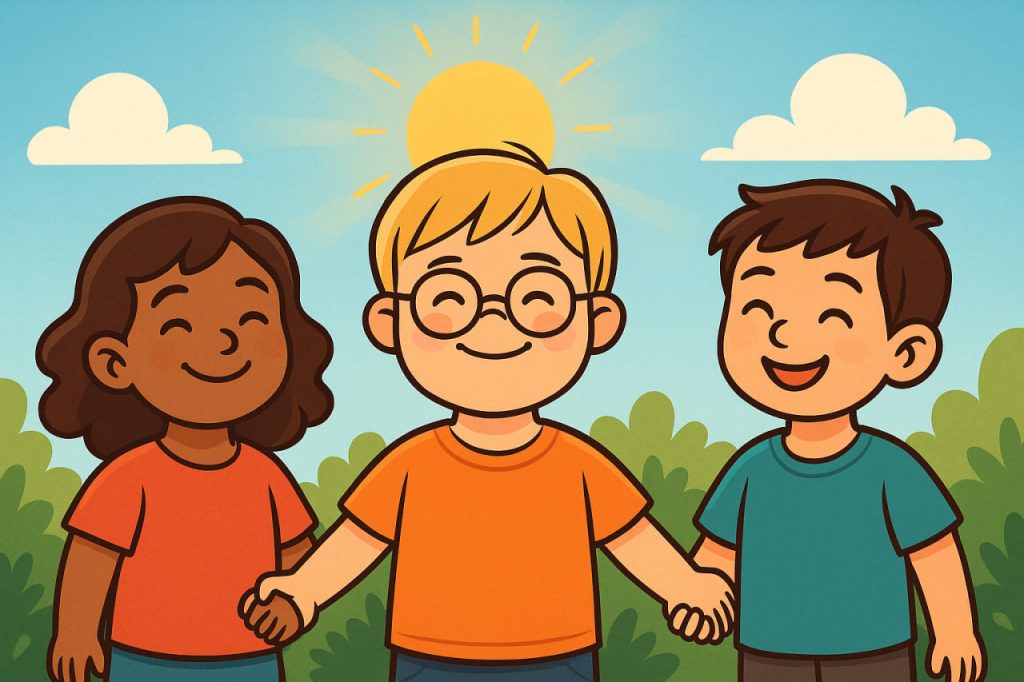Down syndrome is one of the most well-known genetic conditions in the world. It affects approximately one in every 700 babies, regardless of race, culture, or geography. Though it presents unique challenges, people with Down syndrome can lead fulfilling, meaningful lives — especially when supported by inclusive education, healthcare, and social understanding. Recognizing its causes and impacts helps build a more compassionate and informed society.
What Is Down Syndrome?
Down syndrome, medically known as trisomy 21, occurs when a person has an extra copy of chromosome 21. Normally, humans have 46 chromosomes arranged in 23 pairs, but in individuals with Down syndrome, there are 47 chromosomes. This extra genetic material affects development and causes certain physical and intellectual differences.
There are three main types:
- Trisomy 21 (about 95% of cases): every cell has an extra chromosome 21.
- Translocation: the extra chromosome attaches to another chromosome.
- Mosaicism: only some cells carry the extra chromosome, leading to milder effects.
Causes and Risk Factors
Down syndrome is not caused by anything a parent does or doesn’t do — it results from a random event during cell division. However, maternal age plays a role: the likelihood increases slightly as a woman gets older, especially after age 35.
Advanced reproductive technologies now allow early detection through prenatal screening, but diagnosis should always be followed by genetic counseling and emotional support for families.
Common Characteristics
People with Down syndrome often share certain physical traits, though not every individual has all of them:
- A flatter facial profile and upward-slanting eyes.
- A smaller nose and ears.
- A single deep crease across the palm.
- Mild to moderate developmental delays.
Importantly, these physical differences do not define the person. Each individual has unique strengths, abilities, and personality traits.
Health and Development
While many people with Down syndrome experience certain health challenges, medical advances have significantly improved both lifespan and quality of life. Common conditions include:
- Heart defects (affecting about half of newborns with Down syndrome).
- Hearing and vision problems.
- Thyroid disorders.
- Sleep apnea and low muscle tone.
With proper medical care, many individuals live well into their 60s and beyond, compared to an average lifespan of only 10 years in the 1960s.
Education, Inclusion, and Potential
Modern education and social programs emphasize inclusion — integrating children with Down syndrome into mainstream schools whenever possible. Early intervention, speech therapy, and occupational training help develop communication, coordination, and independence.
Many adults with Down syndrome now work, pursue higher education, participate in sports, and advocate for others. They demonstrate creativity, empathy, and strong social connections — qualities that enrich entire communities.
The Role of Society
The way society views Down syndrome has changed dramatically. Once stigmatized, individuals are now recognized for their human dignity and contributions. Awareness campaigns, such as World Down Syndrome Day (March 21), highlight acceptance, diversity, and equality.
Empathy and inclusion are essential. Supporting people with Down syndrome means creating spaces where they can grow, express themselves, and be valued for who they are — not for how they differ.
The Scientific and Ethical Perspective
Research into Down syndrome is expanding rapidly. Scientists are studying how the extra chromosome affects gene expression, brain development, and aging. These discoveries not only improve understanding of the condition but also help in the study of Alzheimer’s disease, which is more common in adults with trisomy 21.
At the same time, ethical discussions continue about genetic screening, medical choices, and respect for all forms of human diversity. Science must always work in harmony with compassion.
Interesting Facts
- Down syndrome was first described in 1866 by John Langdon Down, a British physician.
- The extra chromosome 21 was identified in 1959 by French geneticist Jérôme Lejeune.
- People with Down syndrome experience the same range of emotions and relationships as anyone else.
- Many individuals are now featured in media, art, and advocacy, helping reshape public perception.
Glossary
- Chromosome — a threadlike structure in cells that carries genetic information.
- Trisomy 21 — a genetic condition caused by an extra copy of chromosome 21.
- Mosaicism — a form of Down syndrome where only some cells have the extra chromosome.
- Prenatal screening — medical testing during pregnancy to detect genetic conditions.
- Inclusion — integrating people with disabilities into all aspects of community life.


